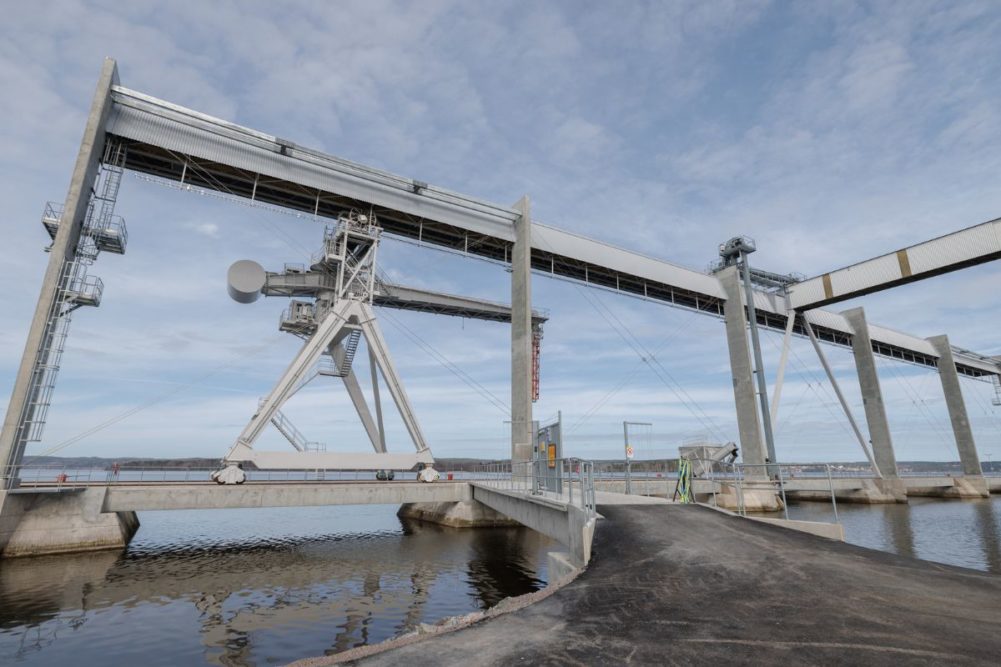DJURÖN, SWEDEN — Lantmännen, a Sweden-based agricultural cooperative, inaugurated its new boat loader and cabin adjacent to the company’s Djurön port grain facility outside Norrköping, resuming export flows following a SEK100 million ($9.32 million) investment.
The facility is designed to meet the needs of farmers in the region while improving and protecting the nation’s grain infrastructure at one of its most important ports, the company said in its April 10 announcement. It will be able to load vessels with up to 60,000 tonnes, which is the largest size of vessel that can be received at Lantmännen’s port facilities.
Lantmännen’s grain facility on Djurön, which has been on the site since 1978, consists of 20 silos with three dryers and has a storage capacity of 250,000 tonnes of grain. The facility has an estimated turnover of 330,000 tonnes per year.
Östergötland, part of Lantmännen’s region East, is a grain-intensive region with about 4,100 cooperative members producing up to 600,000 tonnes of grain, on average about 10% of the Swedish harvest.
“The fact that our members, active Swedish farmers, should have a market for the grain they deliver is part of our core business,” said Elisabeth Ringdahl, executive vice president Agriculture Sector, Lantmännen. “Hence, it is rewarding to be able to inaugurate the new boat loader and resume the export flows at the plant. This creates good opportunities for Swedish farmers and for Lantmännen to be able to load vessels of this size.”
Lantmännen is investing over SEK 1 billion ($93.3 million) in its facilities as it increases capacity and seeks to improve export opportunities for Swedish farmers. In February, ground was broken in Uddevalla, where Lantmännen will build a new grain plant. Further investments are planned in Västerås, Köping and Hargshamn.
“Continued investments in a well-functioning grain infrastructure are important for increasing growth and profitability in Swedish agriculture,” said Magnus Kagevik, president and chief executive officer, Lantmännen. “The plant’s extensive storage capacity and export opportunities also contribute to Sweden’s food preparedness. In the event of national crises or international disruptions, export flows can be turned inwards and thus contribute to Swedish preparedness.”






